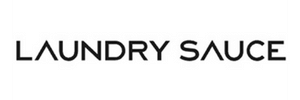Direct Mail for Nonprofits
IgnitePOST is a leading solution for Nonprofit organizations to automatically send handwritten cards that surprise & delight customers.
Treat yourself to a free sample today.


IgnitePOST is a leading solution for Nonprofit organizations to automatically send handwritten cards that surprise & delight customers.
Treat yourself to a free sample today.


Marketing for nonprofits can be tricky.
As a nonprofit marketer, you might be tempted to spend a portion of your budget on marketing your organization to a larger audience.
On the other hand, you might want to spend all the money on the cause itself.
No matter what, marketing for a nonprofit is challenging. You have a limited budget, and you may experience donor fatigue as donors may receive frequent donation requests, facing competition from other nonprofits with similar missions apart from the struggle to raise awareness of your mission and cause.
So, you have to manage your marketing spending with minimal resources. In such a scenario, it only makes sense to invest in marketing channels with the maximum ROI with minimum investment. Direct mail marketing for nonprofits is one such channel that many nonprofit marketers prefer.
Let's dive in to understand more about this marketing strategy.
What is direct mail for nonprofits?
What are the benefits of direct mail marketing for nonprofits?
What are the types of direct mail marketing campaigns for nonprofits?
How to get started with direct mail marketing for nonprofits.
Best practices to follow for direct mail marketing for nonprofits.
Example of direct mail marketing in nonprofits.
Direct mail marketing for nonprofits is sending direct postal mail to donors asking for donations or to volunteers, requesting their participation. These typically include a physical card or brochure that lays down the vision and mission of your nonprofit, the help you seek and the next steps to take if the recipient is interested.
Since both donating and volunteering require people to step out of their comfort zones, sending out direct mail helps instantly strike a chord with them, leading to positive results.
.jpg)
When done right, direct mail marketing can have many benefits. Some of these include:
The biggest advantage of direct mail marketing is that you can customize the message depending on your target persona and your available data. For example, you can address recipients by their first name, tweak your message based on your previous interactions with them, and target your message depending on their interest and demographics. Personalization has many benefits, including making better relations and inspiring the donor or volunteer to take immediate action.
You can track direct mail and calculate its performance easily. For instance, you can add QR codes to track landing page visits or provide a trackable phone number for recipients to call or text on. With direct mail, you can calculate the cost and response rate, thus determining the campaign's success. There are no complex metrics to keep a tab on.
Direct mail, along with other channels of marketing (digital campaigns), creates better brand awareness among donors and volunteers who are not yet familiar with your nonprofit and creates an opportunity for you to gain their participation in the future.
While donors and volunteers are bombarded with emails and digital campaigns, their physical mailboxes are less likely to be as cluttered. Direct mail stands out from the noise and creates a lasting impression on the donor or a potential volunteer.
Nonprofit fundraising campaigns depend a lot on evoking the emotions of the donor or the volunteer. When you send physical letters, cards, brochures, etc., the recipient can touch and feel them, which can help establish a tangible connection with the nonprofit. This, in turn, can evoke the emotions that compel them to take action. Digital campaigns lack such tactile experience.
Direct mail and digital marketing might be seen as different entities, but they work together and complement each other. Nonprofits that use direct and digital marketing see a 118% better response rate than only relying on direct mail.
House file campaigns target donors and volunteers already in your database or mailing lists. A house file campaign works well because the donor or the volunteer is already associated or familiar with your nonprofit.
Direct mail you send to a new prospect falls under this category. When you send this mail to prospective donors and volunteers who are yet to form a connection with your nonprofit, it may take time to convert these prospects into donors since they're not yet familiar with your nonprofit. Your goal of prospecting is to add these prospects to your house file campaign.
Perhaps you already know about newsletters and how they work. So consider sending the physical newsletter as direct mail to increase brand awareness. Apart from incorporating a marketing message, you can use your newsletter to talk about your mission, the kind of work you have been doing, and how you're achieving results. You can also highlight BTS scenes from your nonprofit to create a more tangible experience.
Postcards are an excellent way to keep in touch with your donors throughout the year. A thank you postcard for their contribution, or wishing the donor on their special days, makes them feel valued, and you establish a relationship. It's a great way to stay in touch and constantly remind them how you impact lives through your nonprofit.
Advocacy campaigns are broader than general direct mail in their appeal. For example, if you want to invite a volunteer to educate, spend time, or speak at an event, it requires the donor to spend their time and effort apart from monetary donations. Direct mails work best in such cases because you can personalize the mail.
You might be sending fundraising appeal mail to your donors. To ensure they have your complete attention, you must keep your message short and crisp. As a result, you might miss out on telling the complete backstory and your vision behind the appeal. A direct appeal mail works great here because you have their complete attention without any popups, there's less competition, and it's tangible. When an appealing message ends with a strong CTA, chances are high that the prospect will take some action.
This may sound cliche, but it's important to know your audience to craft your mail in a way that talks to your target audience. Since each fundraiser aims at a different goal, it should be aimed at the right target audience.
The next step is to plan your goal. Are you looking for donors to raise funds? Or are you looking for volunteers to spend some time with your nonprofit? Depending on your goal, work on your direct mail copy, CTA, and attach it to a KPI —- how will you measure it? For example, if you're looking for volunteers, the CTA can be "sign up," and KPI can be how many people are signing up for your campaign.
The success of your campaign depends on the content of the mail. Is it speaking to them directly? Is your message clear enough? Do you have a strong CTA? Is it engaging to read and aesthetically appealing? Thoughtfully create your mail copy. Good direct mail copy should:
Stories work best to hook the reader because it evokes an emotion. So grab their attention by telling your brand story. A story should ideally have three parts — a problem, a conflict, and how you worked around the conflict and solved the problem. You can also write stories about the founders or someone who has benefited from your nonprofit.
Add a touch of personalization with ink and paper in your direct mail outreach. Pick a solution like IgnitePOST that uses automation and robotics to help you scale your direct marketing campaign. Create different variations of handwritten cards to delight your donors. The tool also lets you add your branding in a few easy steps.
Once you're ready with your mail, it's time to send it out! Measure your efforts by setting relevant KPIs. For example, if your goal is to raise funds, evaluate how many mail pieces you have sent ( find the total cost) and compare it with how much you have managed to raise. This will help you gauge the effectiveness of your campaign. Depending on the response rate, tweak your campaign.
Much of a nonprofit's success depends on the relationship it has built with its donors and volunteers. But how do you build relationships with them when you never see them in person? Direct mail works great here to connect with your audience. Craft your communication around one message — how valuable your donors and volunteers are to your nonprofit. Share the wins that were possible thanks to their contributions.
Include white space for better readability, use bigger fonts to highlight the main message, include images, and ensure you have your nonprofit’s branding consistent in your direct mail. Don’t try to overdo your direct mail with too many visuals or too much text; you want the recipient to be able to easily understand what you’re asking for without getting distracted.
Sometimes nonprofits are too shy to ask for donations, or their call to action is not strong enough. As a result, the direct mail message might not be clear to the donor. So, be clear and direct about your appeal in your mail. Always end your mail with a strong CTA so the donor is clear about what action they need to take.
Similar to other marketing channels, you need to ensure that you learn from your direct mail marketing campaigns. Learn from the responses you receive and incorporate feedback in your next campaign.
While we don’t recommend bombarding your donors and volunteers with direct mail, we do promote staying consistent. Don’t vanish after running one campaign; use segmentation to reach out to donors and volunteers based on their engagement in a consistent way. For example, you can send out a direct mail campaign on a quarterly basis to share your wins from the donations received.
WVIA is a Pennsylvania affiliate for both NPR and PBS.
With their offices in Pittston, PA, it’s an ongoing and expected challenge for public radio and television affiliates to raise funds for the upcoming year.
To compete with the increased volume of fundraising solicitations, the organization started to research creative ways to seek the support of first-time and repeat donors - which led them to experimenting with direct mail marketing.
With the help of IgnitePOST, the organization sent out handwritten direct mail notes to surprise and delight donors.

They were able to receive a 40% response rate from a list of 400 leads in their database, leading to being able to raise funds successfully in no time. Apart from the positive response, the organization also received encouraging messages from donors, instantly strengthening the relationship between them.
Read more about their success story here.
Direct mail works like magic for fundraising for nonprofits. It creates high response rates because direct mail is direct, personalized, memorable, and creates tangible effects.
However, it's still an untapped tactic. Nonprofits have a lot of opportunities to strike a chord with their audience. Solutions like IgnitePOST can help you create handwritten notes and engage with your target audience amidst a highly competitive digital landscape.
Click here to get a free sample from IgnitePOST or book a demo.
































Start using IgnitePOST today. Request a free sample card mailed to your address.
No contracts, no commitment and incredible support.
